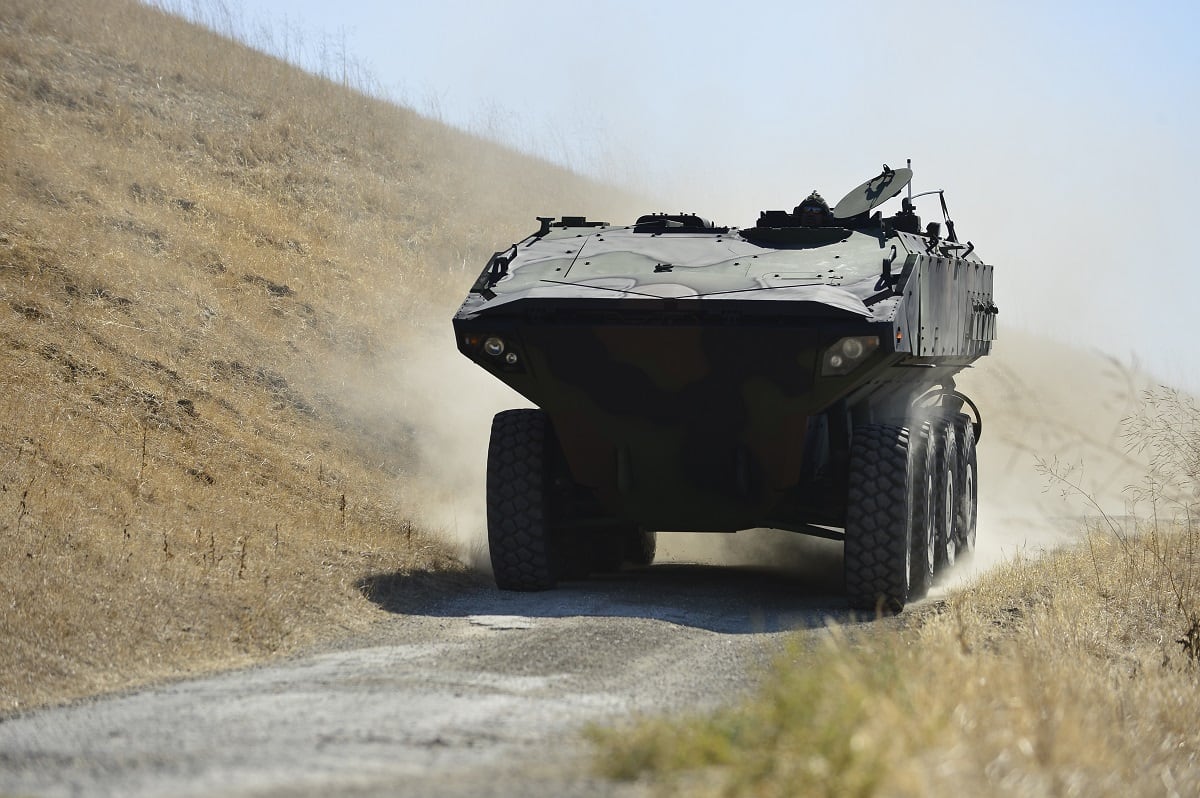While the Corps is nearing a contract award date for the new amphibious combat vehicle, or ACV, don’t expect the assault amphibious vehicle to be sent to the scrap pile anytime soon: The Corps is looking for new tracks to prolong the life of the vehicle into 2035.
It’s part of the Corps’ assault amphibious vehicle, or AAV, survivability upgrade program to keep the over 40-year-old vehicle ticking and on Tuesday the Marines posted a request for information for new tracks that could enhance the legacy amphib vehicle’s mobility.
The RFI submitted by Marine Corps Systems Command seeks information “to assess industry’s capability to produce Improved Amphibious Tracks [IAT] that enhance land mobility and water swim capabilities for approximately 400 AAV SU [ assault amphibious vehicle survivability upgrade],” according to the RFI.
While the Corps waits on the production of the ACV, the legacy AAV’s are amidst various upgrades to plug gaps in the vehicle’s ability to protect crew and Marines in the vehicle from breaching and explosions, a lesson learned from operations in Iraq.
“The AAV SU provides enhanced protection to the crew and embarked Marines with increased underbelly armor, blast mitigating seats, external fuel cells, and redesigned external armor,” the RFI states.
The new survivability upgrades allow the AAV to operate with M1A1 tanks and other armored vehicles associated with a Marine Air-Ground Task Force in urban and or restrictive terrain.
There are three types of AAVs, personnel carrier, command and control, and recovery and the Corps is planning to upgrade 361 AAVP7A2s, 44 AAVC7A2s, and 39 AAVR7s.
While the AAV undergoes upgrades the Corps is nearing a contract award decision expected sometime in June for a low-rate initial production between BAE Systems and SAIC. The Corps plans to acquire 30 low-rate initial production vehicles during fiscal year 2019, according to Navy budget documents.

Testing of the two companies’ prototypes concluded in December and the Corps submitted a request for proposal in January.
The new eight wheeled ACV is expected to be more lethal, better mobility on land and water, and increased blast protection.
But the AAV will remain in use for the foreseeable future, as the Corps expects the ACV to serve as a partial and complimentary replacement to the AAV.
The Marines anticipate a contract award date for the new and improved AAV tracks for testing purposes in December 2018, according to the RFI. “The operational need dates for delivery of IAT to the Operating Forces is 100 sets per year over four years starting October 2021,” the RFI states.
Shawn Snow is the senior reporter for Marine Corps Times and a Marine Corps veteran.





